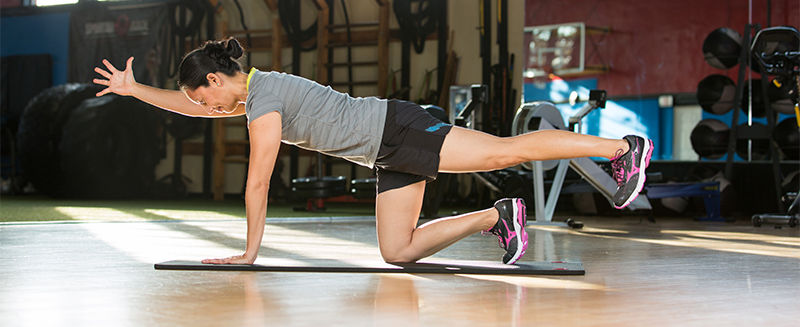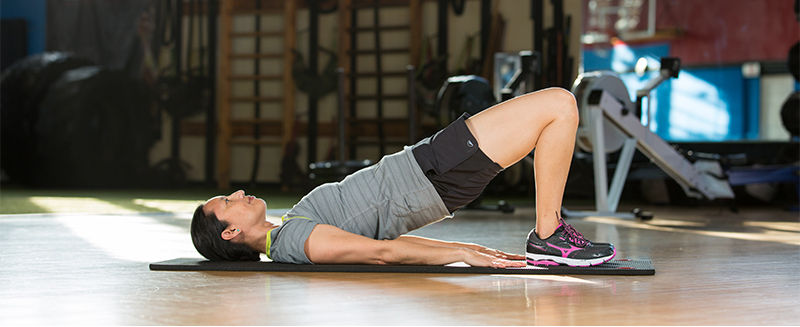As fitness professionals, we’re likely to encounter clients who have either suffered from or are suffering from low back pain. This is one of the most common musculoskeletal disorders that plagues the population and is said to be the second most common complaint doctors hear from patients. When it comes to low back pain, whether it is acute or chronic, or a result of a strain, sprain or disc degeneration, it can be extremely debilitating and can limit one’s ability to function in daily life.
Just as you would individualize programming for a client with a healthy back, give the same considerations to clients suffering from low back pain. Before establishing a lower back exercise program for your client, it’s important to understand the nature, duration, and severity of the low back pain. It is essential for your client to get clearance from a physician or physical therapist. It’s also essential to perform a consultation regarding specific limitations, based on the clinical diagnosis, before designing and implementing an exercise program.
In some instances, completely eradicating low back pain may not be feasible, so the focus should be on improving function and reducing pain. It is important to inform your client that pain reduction and improved function may not be immediate and may take several months to become evident.
Avoid the following movements so as not to exacerbate pain in the low back:
- Rapid twisting, forward flexion or hyperextension
- Unsupported forward flexion
- Simultaneously lifting legs while lying prone or supine
- Twisting at the waist with feet turned
Before implementing a lower back exercise program, determine which movements create discomfort or pain for your client. Clients should inform you of any postures, movements or positions that produce pain. The major focus in programming for low back pain is on improving muscular endurance, which means improving the function of the muscles supporting the spine.
In programming and training:
- Be aware of proper posture and alignment
- Teach clients how to adopt and maintain a neutral spine
- Teach clients to be aware of their lumbar spine, abdominal bracing and glute activation
- Monitor discomfort and regress or cease exercise, if necessary
Listed below are five exercises of varying difficulty to help improve function and relieve low back pain. Exercises should be selected based your individual client’s condition, limitations and the severity of low back pain. As function improves and pain diminishes for the client, you can incorporate more challenging exercises to improve strength.
Start with one set and increase to two to three sets as tolerated and as function improves The recommended range for muscular endurance is 12-16 reps depending on the client’s fitness level and low back pain. You may start with fewer repetitions for beginning clients until they are able to work up to the muscular endurance repetition range.
1. Wall Roll

Improves torsional control and encourages abdominal bracing through co-contraction
- Assume plank position with both elbows planted on a wall
- Abdominals are braced
- While on the balls of the feet, pivot, pulling one elbow off the wall
- Avoid any motion at the spine while the movement occurs
- Work up to approximately 10 repetitions
2. Clamshell Exercise

Retrains the gluteals, which is important for improving back health
- Lie on the side, and anchor the thumb on the anterior superior iliac spine
- Reach around with the fingertips and position them to land on the gluteus medius
- Keeping the heels together, open the knees like a clamshell
- The position of the fingertips on the gluteus medius should allow the client to feel glute activation
3. Side Bridge

Targets lateral muscles, which are important for optimum spinal stability
- On the side of the body, place elbows under the shoulder
- Elevate hips and knees off the ground
- Perform regression with knees on the ground if this is too much for your client
- Hold for 20 seconds
4. Bird Dog

Safely and effectively develops spinal extensors
- Begin on all fours, hands under shoulders and knees under hips
- Extend opposite arm and leg (hold position as tolerated by client)
- Work up to holding extended position for seven to eight seconds on each side
5. Glute Bridge

Improves core stability via glute activation
- Lie supine, elevate hips off the ground
- Activate glutes as hips are elevated
- Hold for three to five seconds
 by
by 










 by
by